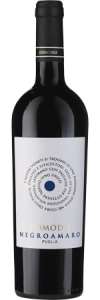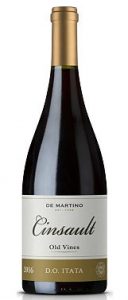We tasted: Pisano Tannat, M&S, £10
Tasting Notes
 Emma says: “Today kicked off with a full morning of judging Albarino wines from Spain and Portugal. Then into an afternoon of mulling over Beaujolais samples. Finished off by approving a few Champagne blends. Yes, this is the type of day all my friends tell me is my job. However the honest truth right now, is that I spend a disproportionately higher time updating spreadsheets.
Emma says: “Today kicked off with a full morning of judging Albarino wines from Spain and Portugal. Then into an afternoon of mulling over Beaujolais samples. Finished off by approving a few Champagne blends. Yes, this is the type of day all my friends tell me is my job. However the honest truth right now, is that I spend a disproportionately higher time updating spreadsheets.
If you are jealous thinking of how I’ve spent today then I can tell you by 11am my teeth were starting to sharpen with the gradual build up of Albarino acidity. By lunch time my senses were so confused I couldn’t decide if I was hungry and felt a little giddy. I promise you that even the most hardened wine taster finds a day of tasting a bit of a mountain to climb. The traditional way to refresh the senses is a cold beer or G&T. Sadly they aren’t included in 52 Grapes so I had to settle for a big bold red in the form of Tannat.
Tannat is a grape I have tasted most from its adopted country of Uruguay. I visited three years ago and fell in love with the country which has beautiful pasture land scenery and coastal sweeps of sparkling sand. The landscape is far more lush than the desert scape of Mendoza which brings to the wines a fresher lighter style. Its winemaking history is as long as Argentina but it hasn’t become quite as famous. And like Argentina the original birthplace of its famous grape is France; but for Tannat it is the region of Madiran. I met and tasted a large array of producers there but one of my favourites was the Pisano family whose wine we are tasting tonight. The large family of Italian brothers showed us around their winery which has a wonderful rustic charm, including tasting cellar filled with empty bottles of wines from around the world the brothers have consumed together. They are so passionate about their wine I regularly get an email to check in to see how they are doing and offer help even though they are the other side of the world. And I have really felt you can taste that passion in their wine.
They had a challenge with me tonight, my senses were tired and a big heavy red is not the natural cure for that. But I was pleased to see it had that charm I expected. The fruit is dark and brooding at first but starts to open out to fragrant red berry fruit. There is a decent note of milk chocolate on the aroma and taste which comes from a tasty hit of oak but the luscious plum and cherry fruit soak it up well. This is a full bodied red with rich tannin but the skill of their winemaking shows through in how smooth it feels, leaving the fruit tasting succulent without any raw grip on the finish. The moderating influence of rain in this country has also left a freshness that comes through as a menthol twist at the end. There is also a savoury edge to Tannat which I like and sets it apart from Malbec but I think this is a wine that would have definite appeal to people who are stuck drinking that wine and looking for a new adventure.
PS other producers to look out for in Uruguay are: Bouza, Garzon, Juanico, Pizzorno.”
Andy says: “Having researched this grape for the newsletter, I was looking forward to checking that the tannins in a Uruguayan version are soft.
I’m happy to confirm that they are – and I’d opt for ‘velvetty’, from my secret tannin descriptor site. After opening and smelling, I was a little hesitant as the wine smelt a bit farmyardy and possibly a touch closed, and the first taste wasn’t that great. But, as has often happened in the last few months, after a few minutes in the glass it greatly improved.
But, it didn’t improve enough to blow me away. I’ve learnt over the year that I like smokey, silky, reds like Rioja. So whilst I will have no trouble finishing the bottle, and to be honest I’ll have not trouble drinking more in the future, it won’t be at the top of my list.”
Buying Guide
Tannat is a kindred spirits of Malbec given it heralds from France (in Madiran region) but has travelled to South American and found its true home in Uruguay. If you can find a version from France or Urguauy it will be good enough. However we are going to try a Urugyuan version to taste it in its newest form.


 Emma says: “I was surprised that the search for Furmint wasn’t that hard, but maybe that is in contrast to the Marsanne mission last week. Oh I miss the heady weeks of tasting Merlot. I’m lucky to have a gorgeous wine bar/come shop near the office called Vinoteca and found a Furmint there. Served to me by a very excited Hungarian who was pleased I was specifically looking for a wine from her native country.
Emma says: “I was surprised that the search for Furmint wasn’t that hard, but maybe that is in contrast to the Marsanne mission last week. Oh I miss the heady weeks of tasting Merlot. I’m lucky to have a gorgeous wine bar/come shop near the office called Vinoteca and found a Furmint there. Served to me by a very excited Hungarian who was pleased I was specifically looking for a wine from her native country.
 We tasted: Houdamond Pinotage, £13, M&S
We tasted: Houdamond Pinotage, £13, M&S




 Emma says: “
Emma says: “


 Emma says:”I really wanted to find a 2017 vintage Verdejo this week because I have always seen this as a grape that needs to be youthful to show well.
Emma says:”I really wanted to find a 2017 vintage Verdejo this week because I have always seen this as a grape that needs to be youthful to show well.
 Emma says: “This week Andy really held me back. I was ready to crack open a fine bottle of Bordeaux for our Cabernet experience. One of those really pricey bottles that I’ve saved for a “special” occasion. Since I never seem to find a grand enough moment to fit opening one, I thought 52 grapes might fit the bill. But no, Andy was my kill joy, he said we needed to find something similar to what other readers might be drinking. Do I sound bitter?
Emma says: “This week Andy really held me back. I was ready to crack open a fine bottle of Bordeaux for our Cabernet experience. One of those really pricey bottles that I’ve saved for a “special” occasion. Since I never seem to find a grand enough moment to fit opening one, I thought 52 grapes might fit the bill. But no, Andy was my kill joy, he said we needed to find something similar to what other readers might be drinking. Do I sound bitter?
 Emma says: “I’ve been looking forward to this week because I knew exactly which wine I wanted us to taste. It is actually quite rate to find a 100% Cinsault wine but I have fortunately found my ultimate one when visiting a favourite Chilean producer De Martino three years ago.
Emma says: “I’ve been looking forward to this week because I knew exactly which wine I wanted us to taste. It is actually quite rate to find a 100% Cinsault wine but I have fortunately found my ultimate one when visiting a favourite Chilean producer De Martino three years ago.